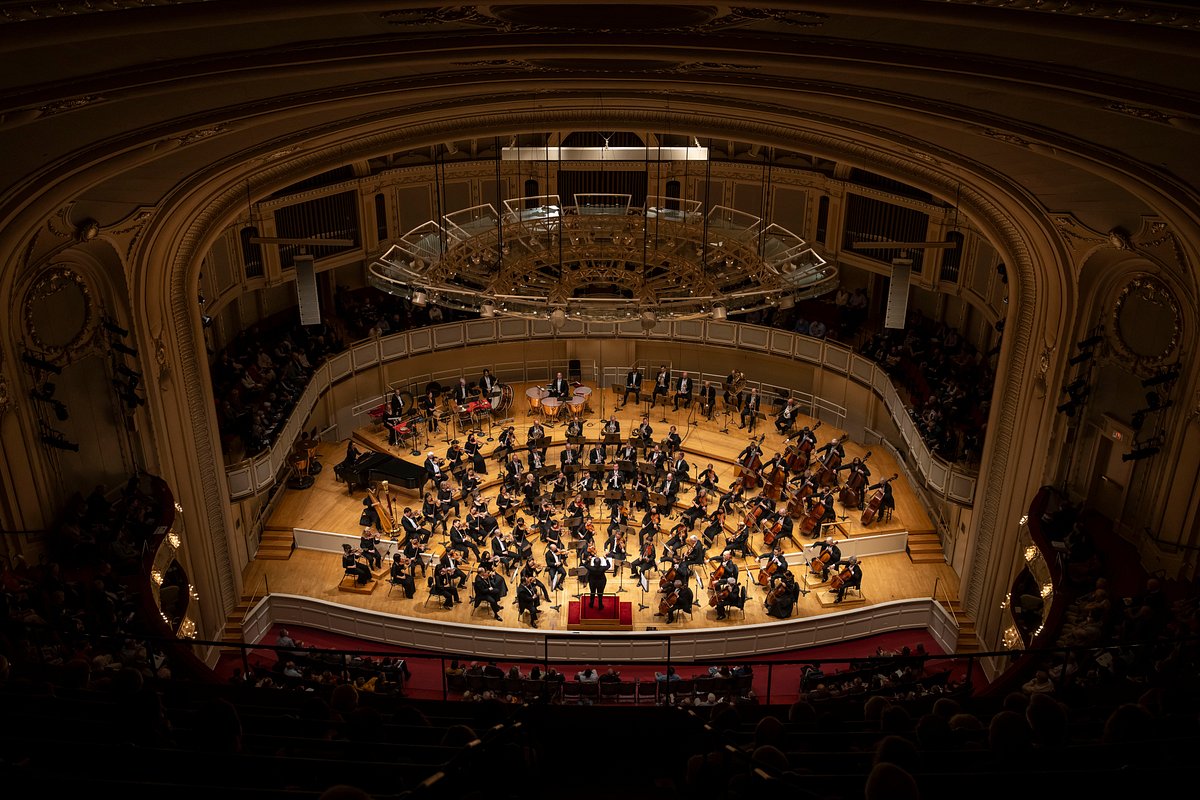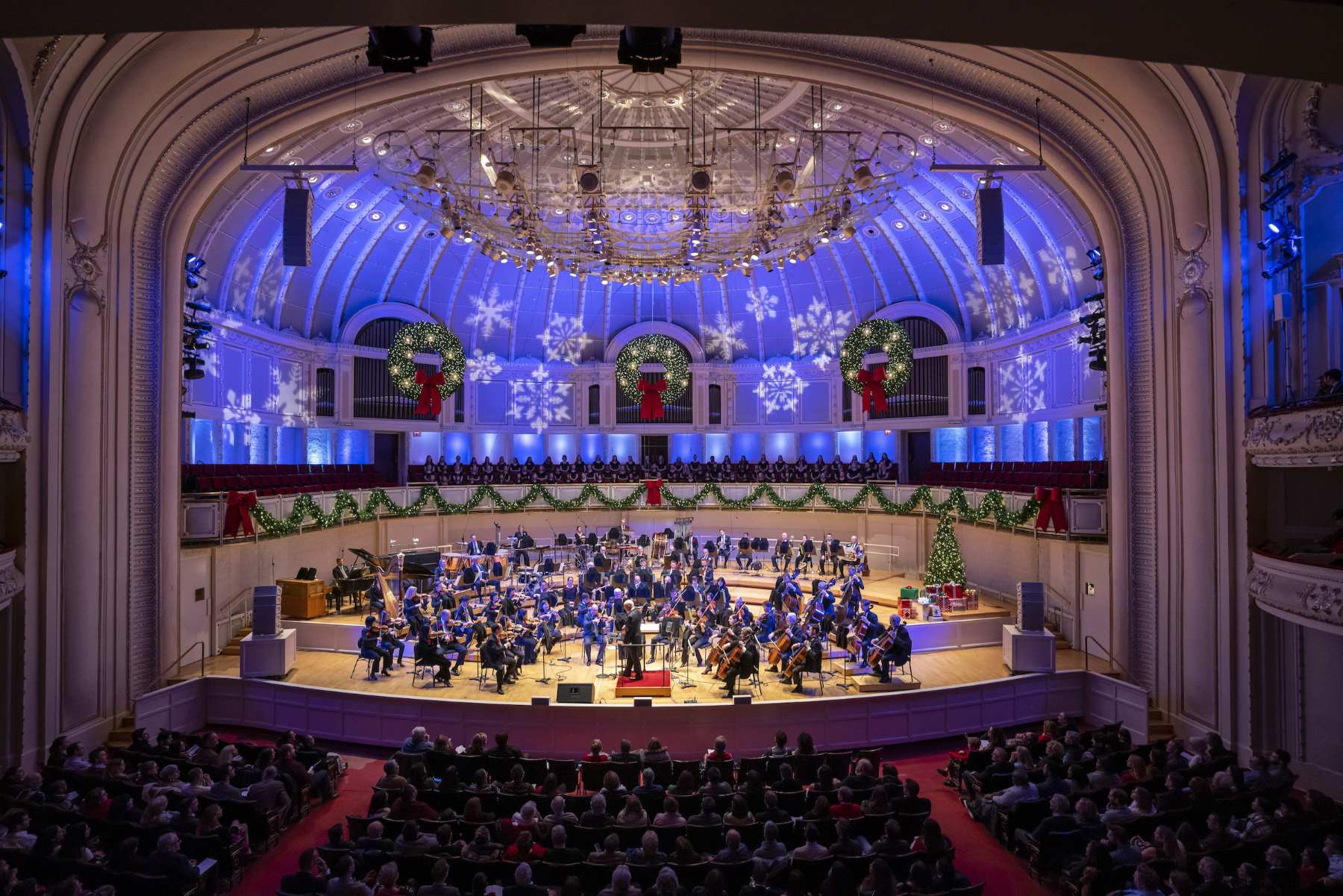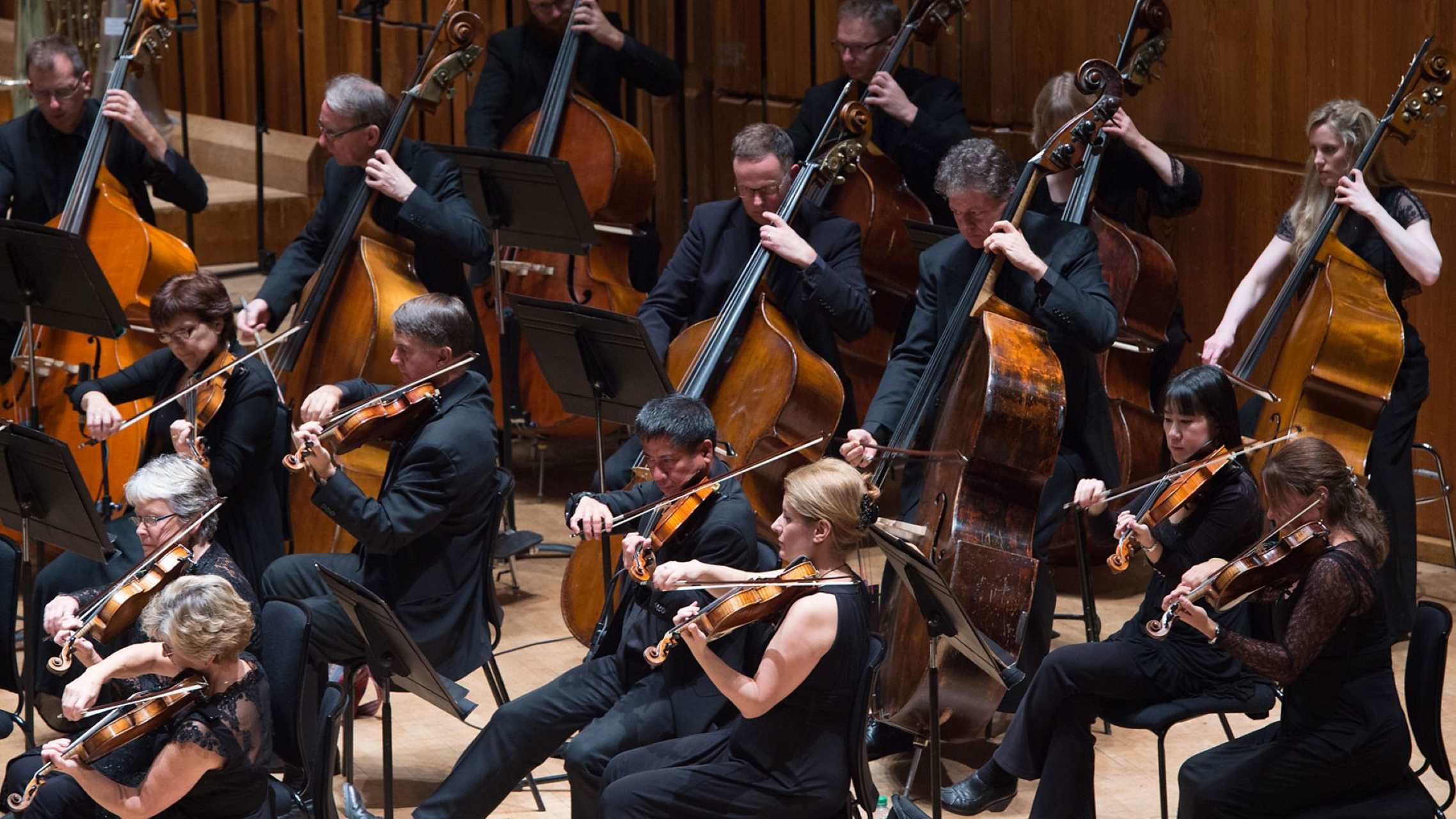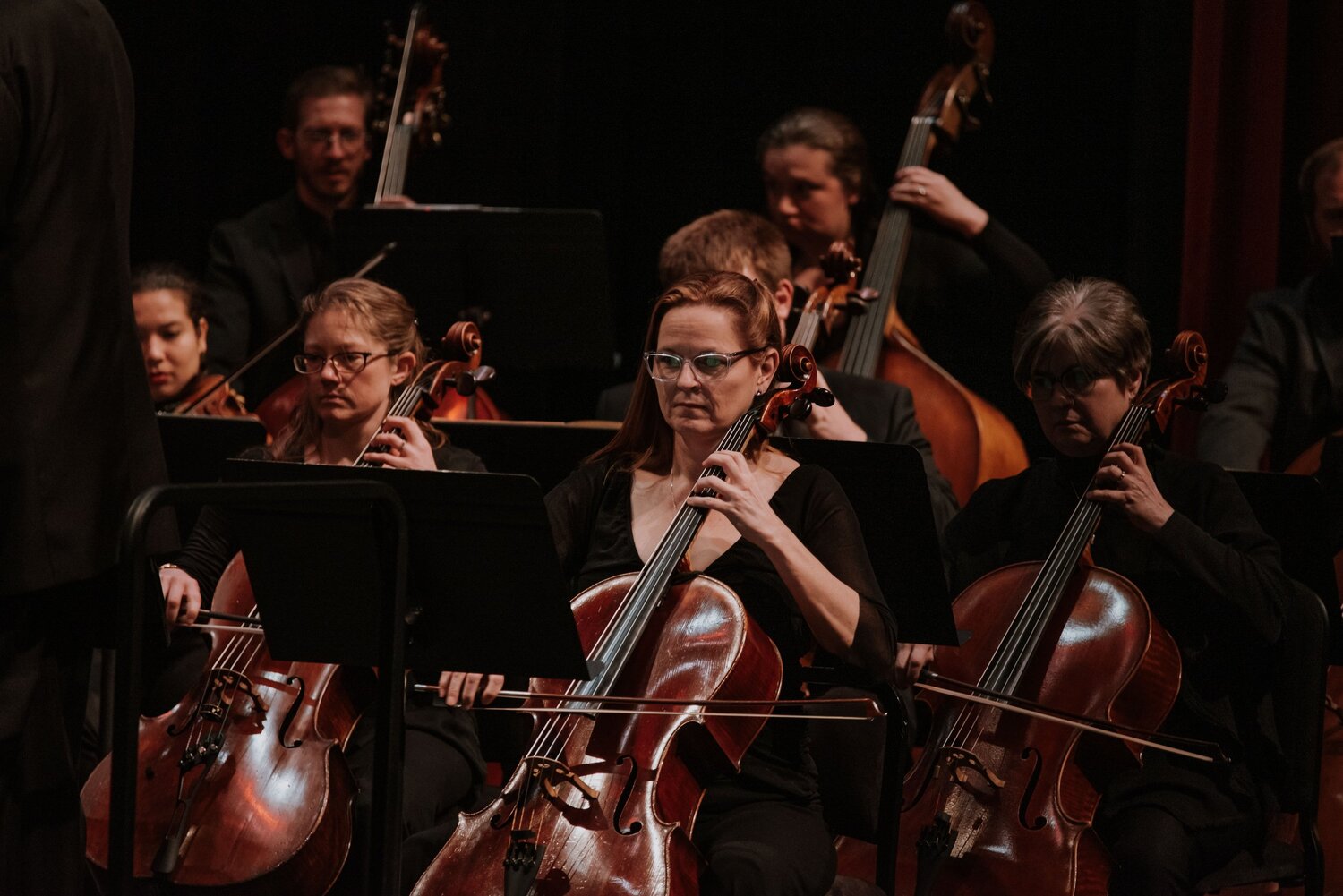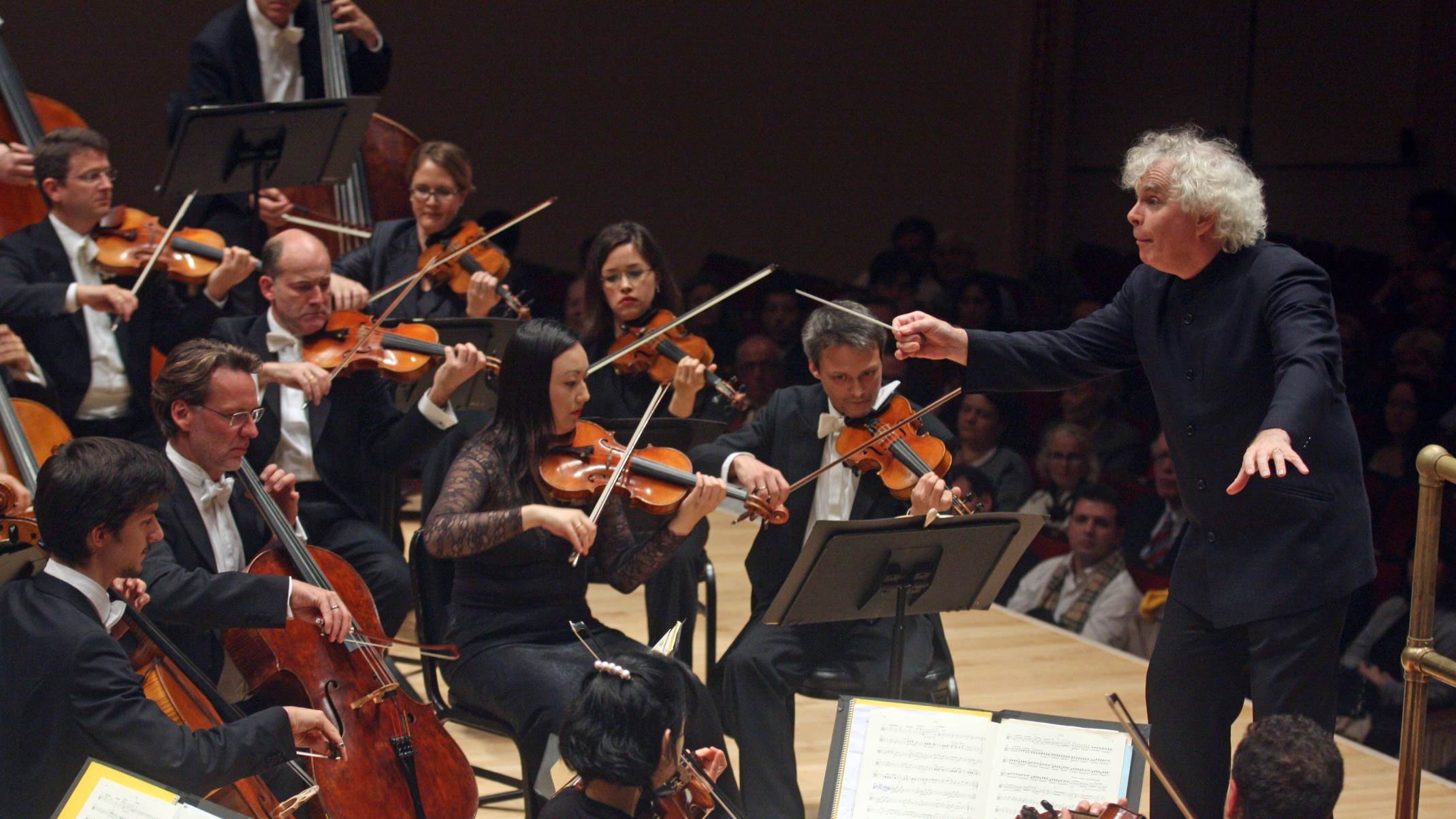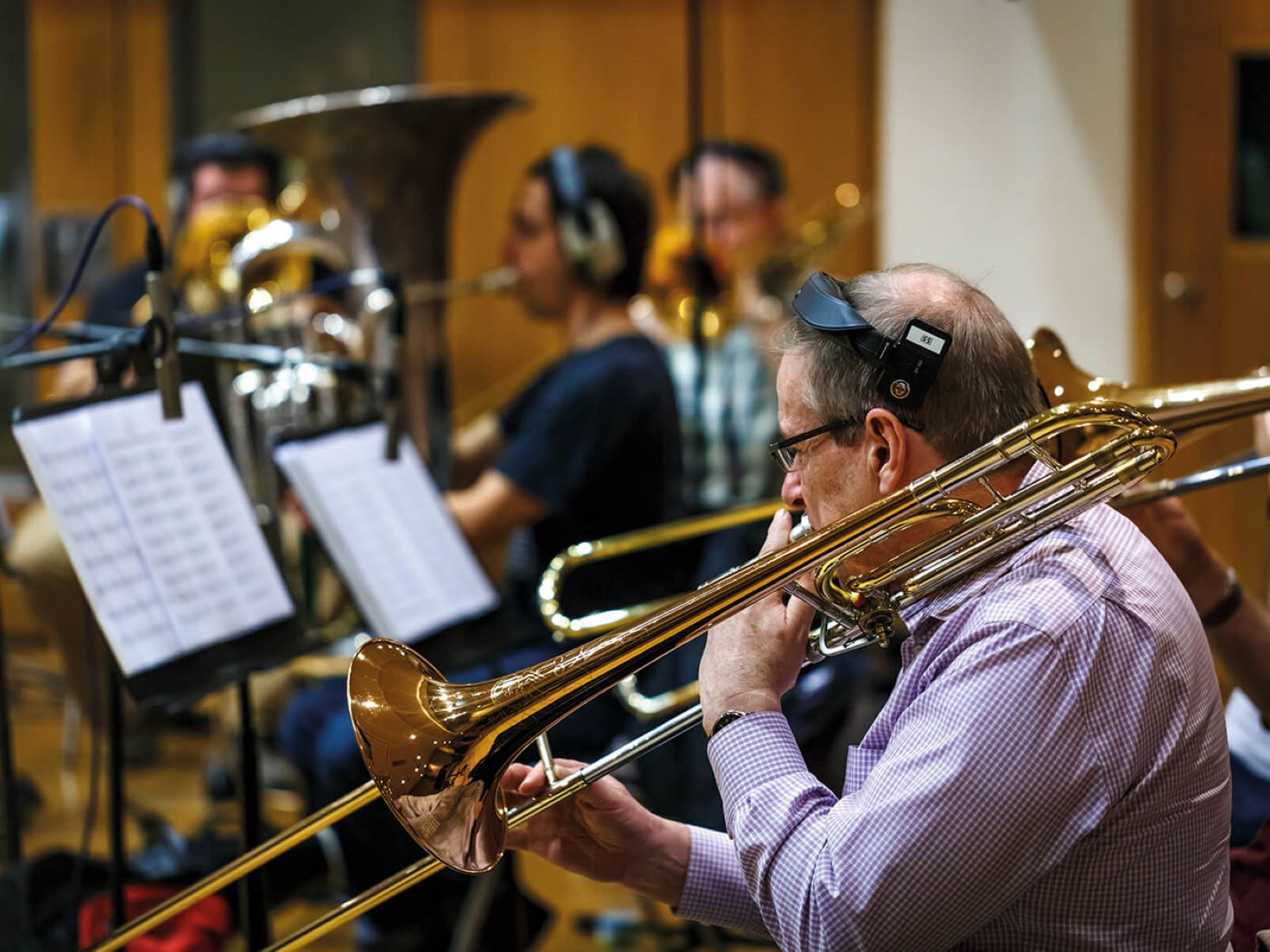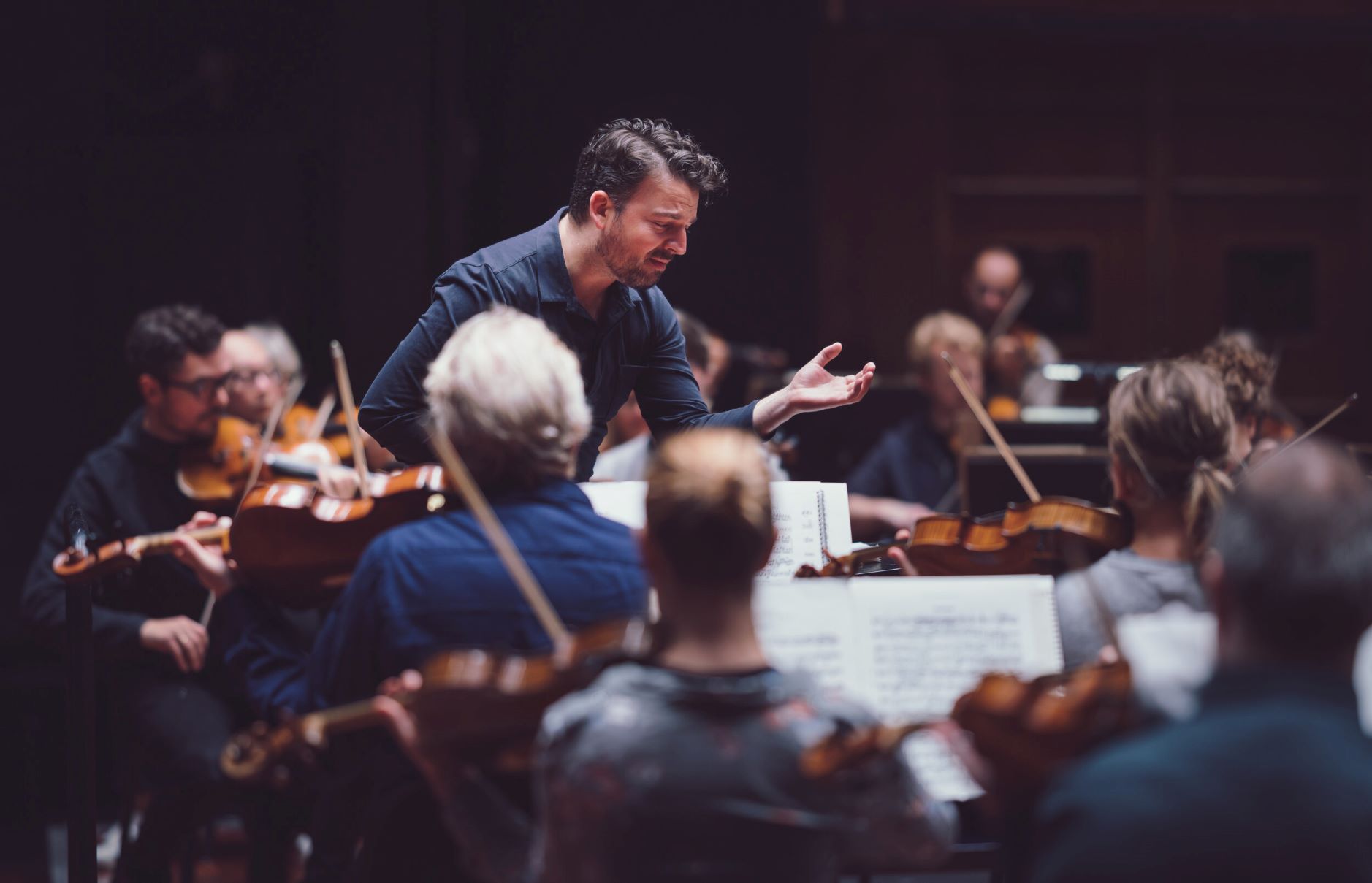Home>Genres>Symphony>What Is The Oldest Symphony Orchestra In The Usa
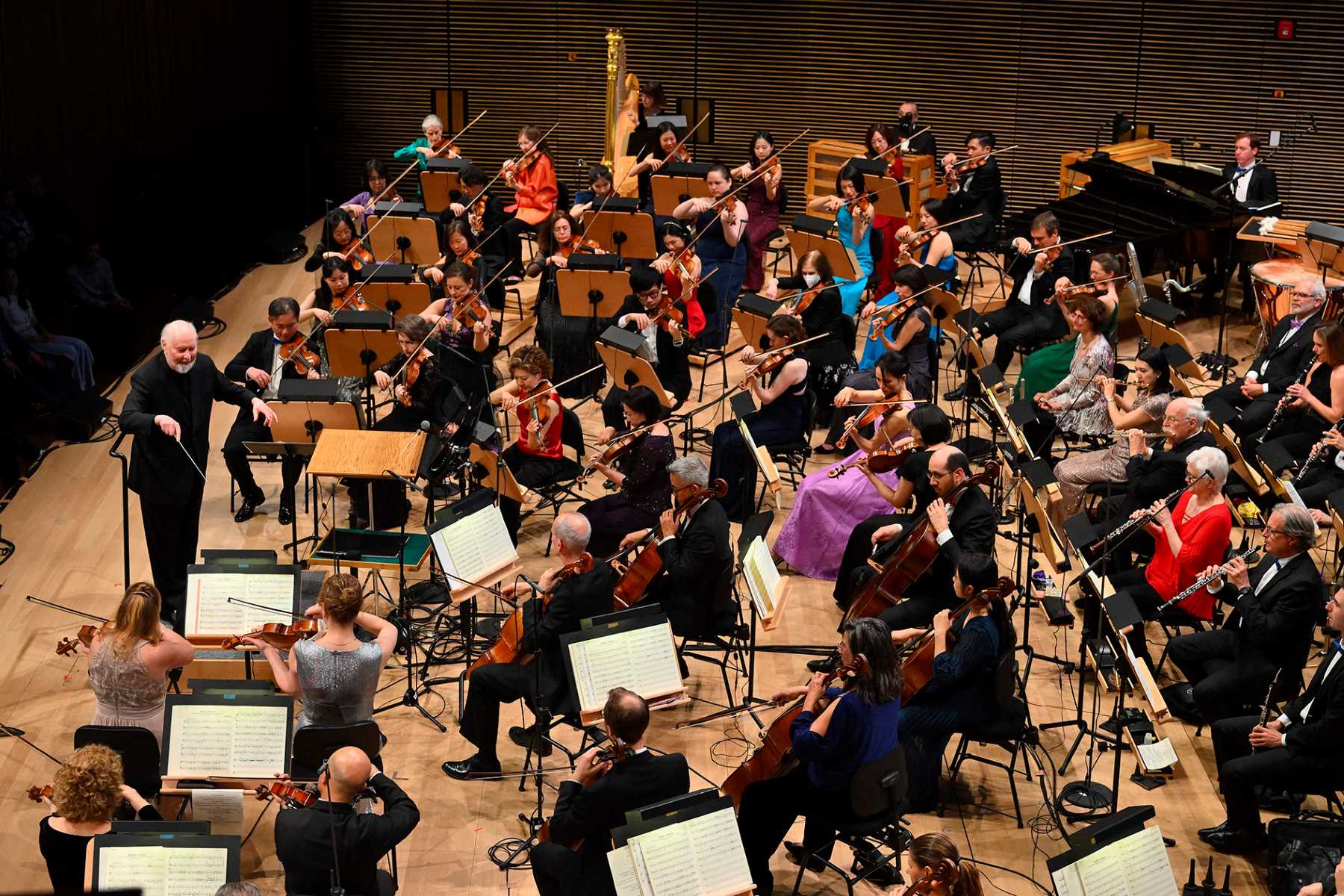

Symphony
What Is The Oldest Symphony Orchestra In The Usa
Modified: January 22, 2024
Discover the oldest symphony orchestra in the USA. Learn about the rich history and timeless performances of this iconic symphony.
(Many of the links in this article redirect to a specific reviewed product. Your purchase of these products through affiliate links helps to generate commission for AudioLover.com, at no extra cost. Learn more)
Table of Contents
- What Is The Oldest Symphony Orchestra In The USA
- Introduction
- The Origins of Symphony Orchestras in the USA
- The Birth of the Oldest Symphony Orchestra in the USA
- Historical Significance of the Oldest Symphony Orchestra
- Evolution and Growth of the Oldest Symphony Orchestra
- Notable Performances and Collaborations
- Contributions and Impact on American Music
- Challenges and Resilience of the Oldest Symphony Orchestra
- Conclusion
What Is The Oldest Symphony Orchestra In The USA
When it comes to the rich history of symphony orchestras in the United States, there is one that stands out as the oldest and most prestigious. Founded over a century ago, this orchestra has played a pivotal role in shaping the American classical music landscape and has provided countless memorable performances to audiences across the nation.
The title of the oldest symphony orchestra in the USA belongs to the New York Philharmonic. Established in 1842, the New York Philharmonic has a remarkable legacy that spans almost two centuries. It has witnessed the evolution of American music, contributed to the development of new compositions, and showcased the talents of countless renowned musicians.
Originally known as the Philharmonic Society of New York, the orchestra was founded by a group of ambitious musicians with a vision of bringing European-style orchestral music to American audiences. They were determined to establish a world-class orchestra that would rival the finest ensembles of the Old World.
Under the leadership of its first conductor, Ureli Corelli Hill, the New York Philharmonic began its journey with a series of concerts at the Apollo Rooms in Lower Manhattan. The enthusiastic response from audiences prompted the orchestra to expand its repertoire and perform at larger venues, marking the start of its rise to prominence.
Throughout its long and illustrious history, the New York Philharmonic has nurtured and showcased musical talent of the highest caliber. From legendary conductors such as Gustav Mahler, Arturo Toscanini, and Leonard Bernstein to virtuoso soloists like Itzhak Perlman and Yo-Yo Ma, the orchestra has collaborated with some of the most extraordinary musicians of their time.
The New York Philharmonic has also played a crucial role in premiering and commissioning new works by prominent American composers. It has championed the music of symphonic luminaries such as Aaron Copland, Leonard Bernstein, and John Adams, contributing to the rich tapestry of American classical music.
Over the years, the New York Philharmonic has faced its fair share of challenges and obstacles. From financial crises to labor disputes, the orchestra has demonstrated resilience and determination in overcoming these hurdles. It has continued to innovate and adapt, embracing new technologies and expanding its outreach programs to engage with diverse communities.
Today, the New York Philharmonic remains a cultural powerhouse, revered for its artistic excellence and commitment to musical education and accessibility. It continues to captivate audiences with its spirited performances at its home, David Geffen Hall, and through its global tours and recordings.
As the oldest symphony orchestra in the USA, the New York Philharmonic has not only left an indelible mark on the American music scene but has also served as an inspiration for countless musicians and orchestras across the country. Its longevity and enduring legacy stand as a testament to the power of music to transcend time and connect people from all walks of life.
Introduction
Symphony orchestras have long been an integral part of the cultural fabric of the United States. These magnificent ensembles bring together a multitude of talented musicians, creating a harmonious blend of instruments and melodies that captivate audiences. However, when one thinks of the oldest symphony orchestra in the USA, one name immediately comes to mind: the New York Philharmonic.
The New York Philharmonic holds a significant place in the history of American classical music. With a legacy that spans nearly two centuries, this orchestra has not only shaped the music scene in New York City but has also contributed to the development of orchestral music throughout the nation.
Established in 1842 as the Philharmonic Society of New York, the orchestra was a bold endeavor by a group of visionary musicians. Their goal was to bring the grandeur and richness of European-style symphonic music to American audiences. The founding members were determined to create a world-class ensemble that could rival the renowned orchestras of Europe.
From its humble beginnings, the New York Philharmonic gradually gained recognition and paved the way for the growth of symphony orchestras in the United States. It has not only served as a platform for exceptional musical talent but has also introduced audiences to new works, showcased renowned soloists, and collaborated with esteemed composers.
In this article, we will delve into the fascinating history and evolution of the oldest symphony orchestra in the USA, exploring its significant contributions to American music, its notable performances and collaborations, as well as the challenges it has overcome throughout its remarkable journey.
Join us on a captivating journey through time as we discover the story behind the New York Philharmonic, a true cultural treasure that continues to inspire and enchant music lovers around the world.
The Origins of Symphony Orchestras in the USA
The roots of symphonic music in the United States can be traced back to the early 19th century. As European classical music gained popularity and influence globally, American music enthusiasts sought to establish orchestras that would bring these musical traditions to their shores.
During the early years of the 1800s, American cities, particularly those with thriving cultural scenes like Boston, Philadelphia, and New York, began forming musical societies and ensembles. These organizations were often comprised of local amateur and professional musicians who shared a passion for classical music.
One of the earliest significant musical societies in the USA was the Handel and Haydn Society in Boston, founded in 1815. This ensemble focused primarily on performing oratorios and choral works, but their performances also featured instrumental compositions.
As interest in symphony music grew, various orchestras were established in different cities. Some of the notable early orchestras included the Musical Fund Society of Philadelphia (1820) and the Philharmonic Society of New York (1832). These orchestras played a vital role in introducing audiences to the symphonic repertoire and paving the way for the establishment of larger and more prestigious ensembles.
The establishment of the New York Philharmonic in 1842 marked a turning point for symphonic music in the United States. With its ambitious vision and commitment to excellence, the New York Philharmonic aimed to elevate orchestral performances and rival the renowned ensembles of Europe.
During the mid to late 19th century, other prominent orchestras were also founded across the country. The Boston Symphony Orchestra was established in 1881, the Chicago Symphony Orchestra in 1891, and the Philadelphia Orchestra in 1900. These orchestras further solidified the presence and popularity of symphonic music in the American cultural landscape.
It is worth noting that while these orchestras were founded and led by European-trained conductors, they also embraced American composers and showcased their works. This led to the development of a uniquely American symphonic repertoire, with composers like Aaron Copland and Samuel Barber making significant contributions.
The establishment and growth of symphony orchestras in the USA can be attributed to a combination of factors, including the increasing interest and appreciation for classical music among the American public, the influence of European musical traditions, and the dedication of visionary musicians and patrons who recognized the importance of orchestral music.
Today, symphony orchestras can be found in cities large and small across the United States, enriching local communities with their artistry and providing a platform for talented musicians to showcase their skills. The origins of these orchestras, dating back to the 19th century, set the stage for the vibrant and diverse symphonic landscape we see today in the United States.
The Birth of the Oldest Symphony Orchestra in the USA
The birth of the oldest symphony orchestra in the USA, the New York Philharmonic, is a story of ambition, perseverance, and a deep love for music. Founded in 1842, the New York Philharmonic has played a significant role in shaping the American classical music scene and has become a revered cultural institution.
The idea of establishing a symphony orchestra in New York City was born out of a desire to bring European-style orchestral music to American audiences. A group of passionate musicians, led by the conductor Ureli Corelli Hill, came together to form the Philharmonic Society of New York.
The inaugural concert of the Philharmonic Society took place on December 7, 1842, at the Apollo Rooms in Lower Manhattan. The program featured a mix of classical works by renowned composers such as Beethoven, Mendelssohn, and Weber. The concert was met with immense enthusiasm from audiences, setting the stage for the orchestra’s future success.
Under Hill’s leadership, the Philharmonic Society aimed to establish a world-class orchestra that would rival the prestigious ensembles in Europe. The society recruited talented musicians and collaborated with esteemed guest conductors from overseas to elevate the artistic quality of their performances.
As the popularity of the Philharmonic Society grew, so did the demand for larger concert venues. The orchestra began performing at the larger and more prestigious Apollo Hall, and later, at the historic Metropolitan Hall. These venues allowed the orchestra to accommodate a larger audience and create a more immersive concert experience.
The Philharmonic Society faced its fair share of challenges in its early years. Financial struggles and leadership changes posed obstacles that tested the resilience of the orchestra. However, with the support of dedicated patrons and the unwavering commitment of its musicians, the society managed to overcome these challenges and continue its artistic mission.
In 1870, the Philharmonic Society underwent a significant change. After years of operating as a society with a rotating conductor roster, the decision was made to appoint a permanent conductor. German-born conductor Theodore Thomas was appointed as the first Music Director of the society, solidifying its commitment to artistic excellence and stability.
Under Thomas’s guidance, the New York Philharmonic embarked on its journey to becoming one of the most revered symphony orchestras in the world. Thomas cultivated a distinct sound and artistic vision for the orchestra, expanding its repertoire and developing a reputation for innovative programming.
Throughout its long history, the New York Philharmonic has continued to evolve and adapt to the changing musical landscape. It has toured extensively, both nationally and internationally, showcasing its exceptional talent and fostering cultural exchange.
Today, the New York Philharmonic remains a cornerstone of the classical music scene in the United States. It continues to attract leading conductors and soloists, delighting audiences with its captivating performances at its home, David Geffen Hall, and through its extensive recorded catalog.
The birth of the New York Philharmonic marked a significant milestone in the development of symphonic music in the USA. Its establishment paved the way for the growth of other orchestras across the country, and its ongoing artistic legacy serves as a testament to the enduring power of music to inspire, unite, and transcend boundaries.
Historical Significance of the Oldest Symphony Orchestra
The oldest symphony orchestra in the USA, the New York Philharmonic, holds immense historical significance in the realm of classical music. Throughout its long and storied existence, the orchestra has made a profound impact on American culture, music education, and the development of orchestral music.
One of the key historical significances of the New York Philharmonic is its role in establishing the symphonic tradition in the United States. In the mid-19th century, as European symphony orchestras were flourishing, the New York Philharmonic set out to bring this grand tradition across the Atlantic. The orchestra’s early performances introduced American audiences to the symphonic repertoire, fostering a love and appreciation for classical music that continues to resonate today.
The New York Philharmonic has also played a crucial role in nurturing American composers and showcasing their works. Throughout its history, the orchestra has premiered numerous compositions by notable American composers such as Aaron Copland, Leonard Bernstein, and John Adams. These premieres and collaborations have not only contributed to the growth of American symphonic music but have also solidified the orchestra’s standing as a champion of contemporary repertoire.
In addition to its artistic contributions, the New York Philharmonic has played a significant role in the cultural life of New York City. As one of the city’s premier cultural institutions, the orchestra has provided a platform for world-class musicians, conductors, and soloists to showcase their talents. Its performances at renowned venues, such as Carnegie Hall and Lincoln Center, have become iconic moments in the city’s cultural history.
The orchestra’s commitment to music education and community engagement is another aspect of its historical significance. The New York Philharmonic has a long-standing tradition of educational programs, including concerts for young audiences, masterclasses, and workshops. These initiatives have helped inspire the next generation of musicians and fostered a deeper appreciation for symphonic music among diverse communities.
Throughout its existence, the New York Philharmonic has faced numerous challenges, including financial crises, labor disputes, and changing trends in the music industry. However, the orchestra’s resilience and ability to adapt have allowed it to maintain its status as one of the preeminent symphony orchestras in the world.
The New York Philharmonic’s historical significance extends beyond its performances and accolades—it is a cultural institution that has helped shape the fabric of American music. Its legacy serves as a reminder of the power of music to unite, inspire, and transcend boundaries. As the oldest symphony orchestra in the USA, the New York Philharmonic continues to leave an indelible mark on the world of classical music and remains a beacon of artistic excellence and innovation.
Evolution and Growth of the Oldest Symphony Orchestra
The evolution and growth of the oldest symphony orchestra in the USA, the New York Philharmonic, mirrors the story of American classical music itself. Over its long and illustrious history, the orchestra has undergone significant transformations, embraced new artistic directions, and expanded its influence both nationally and globally.
From its early days as the Philharmonic Society of New York in 1842, the orchestra quickly gained recognition for its exceptional performances and commitment to musical excellence. Under the leadership of renowned conductors such as Theodore Thomas, Gustav Mahler, Arturo Toscanini, Leonard Bernstein, and many others, the New York Philharmonic honed its unique sound and artistic identity.
Throughout the late 19th and early 20th centuries, the orchestra expanded its repertoire, adding symphonies, concertos, and operas to its programming. It embraced the groundbreaking works of European composers like Wagner and Mahler, as well as American composers such as Aaron Copland and Charles Ives.
The New York Philharmonic’s growth and influence accelerated during the mid-20th century. It became one of the first American orchestras to embark on international tours, including groundbreaking visits to the Soviet Union in 1959 and China in 1973. These tours not only showcased the orchestra’s talent on a global stage but also fostered cultural exchange and diplomacy.
The orchestra’s commitment to contemporary music has been a driving force in its evolution. In 1962, it established the position of Composer-in-Residence, providing a platform for emerging and established composers to collaborate with the orchestra. This initiative led to the premieres of numerous groundbreaking works, further solidifying the orchestra’s reputation as a leading proponent of new music.
In recent decades, the New York Philharmonic has continued to innovate and adapt to the ever-changing landscape of classical music. It has embraced technology by streaming concerts online, releasing recordings, and utilizing digital platforms to reach wider audiences. The orchestra has also expanded its educational initiatives, including free concerts, youth programs, and community engagement projects that aim to make classical music more accessible and inclusive.
Another significant development in the orchestra’s evolution was the 2003 opening of its permanent home at David Geffen Hall in Lincoln Center. This iconic venue provided the orchestra with a state-of-the-art performance space, enhancing the quality of its acoustics and creating an immersive experience for audiences.
Despite the challenges faced by orchestras in the digital age and the changing landscape of the music industry, the New York Philharmonic continues to thrive. It remains a cultural cornerstone, captivating audiences with its diverse programming, world-class musicianship, and unwavering commitment to artistic excellence.
The evolution and growth of the oldest symphony orchestra in the USA, the New York Philharmonic, is a testament to its adaptability, artistic vision, and unwavering dedication to the art form. As it looks to the future, the orchestra will undoubtedly continue to transform, innovate, and pave the way for new generations to experience the power and beauty of symphonic music.
Notable Performances and Collaborations
Throughout its distinguished history, the oldest symphony orchestra in the USA, the New York Philharmonic, has amassed an impressive list of notable performances and collaborations. From historic premieres to iconic partnerships, these moments have significantly enriched the orchestra’s legacy and cemented its status as one of the world’s most esteemed musical ensembles.
One of the most iconic performances in the New York Philharmonic’s history took place in 1928 when it became the first American orchestra to perform at Carnegie Hall. This legendary event marked a milestone not only for the orchestra but also for the renowned concert hall, establishing a lasting partnership that continues to this day.
Throughout the 20th century, the orchestra collaborated with some of the greatest musicians of their time. In the 1950s, under the baton of Leonard Bernstein, the New York Philharmonic embarked on several memorable collaborations. Most notably, Bernstein collaborated with pianist Glenn Gould on groundbreaking performances of Beethoven’s Piano Concerto No. 1 and Brahms’ Piano Concerto No. 1. These performances, known for their virtuosity and interpretative depth, became legendary milestones in the world of classical music.
Another historic moment occurred in 1962 when the New York Philharmonic premiered Stravinsky’s “Symphony of Psalms,” conducted by the composer himself. This performance not only showcased the orchestra’s technical brilliance but also affirmed its commitment to commissioning and premiering new works by groundbreaking composers.
The New York Philharmonic has also collaborated with renowned soloists from various musical genres. In 1989, the orchestra accompanied jazz legend Wynton Marsalis in a performance of his groundbreaking jazz oratorio, “In This House, On This Morning.” This collaboration between a symphony orchestra and a jazz musician demonstrated the orchestra’s versatility and willingness to explore new musical territories.
Collaborations with renowned conductors have also played a significant role in the New York Philharmonic’s history. In 2009, the orchestra appointed Alan Gilbert as its Music Director, ushering in a new era of artistic exploration and innovation. Under Gilbert’s leadership, the orchestra embarked on a nine-year project, “The Nielsen Project,” which involved recording and performing the complete symphonies of Danish composer Carl Nielsen. This ambitious undertaking received widespread critical acclaim and solidified the orchestra’s reputation for its commitment to both classic repertoire and contemporary works.
The New York Philharmonic has also been at the forefront of multimedia collaborations. In 2016, the orchestra presented the world premiere of “Philharmonic Live,” a concert that combined live music with digital imagery and projection mapping, creating a visually stunning and immersive experience for the audience.
These notable performances and collaborations highlight the New York Philharmonic’s dedication to artistic excellence and its drive to push the boundaries of symphonic music. The orchestra’s willingness to engage with diverse artistic genres, embrace new technologies, and work with visionary musicians and conductors has allowed it to continue captivating audiences and maintain its position as a leading force in the classical music world.
Contributions and Impact on American Music
The oldest symphony orchestra in the USA, the New York Philharmonic, has made significant contributions to the growth and development of American music. Throughout its long and storied history, the orchestra has championed American composers, premiered groundbreaking works, and played a crucial role in shaping the cultural landscape of the nation.
One of the notable contributions of the New York Philharmonic to American music is its dedication to promoting and showcasing the works of American composers. The orchestra has premiered numerous compositions by renowned American composers, including Aaron Copland, Leonard Bernstein, and John Adams. By providing a platform for these visionary artists, the New York Philharmonic has played a central role in fostering the growth of American symphonic music.
One of the most iconic premieres in the orchestra’s history was Aaron Copland’s “Appalachian Spring” in 1944. Conducted by Artur Rodzinski, the performance introduced audiences to Copland’s distinct American sound and helped establish him as one of the preeminent American composers of the 20th century. The New York Philharmonic’s commitment to American composers has continued to this day, with its ongoing commissioning and premiering of new works by contemporary American voices.
The New York Philharmonic’s impact on American music extends beyond premieres and commissions. The orchestra’s performances and recordings of American classical compositions have helped to popularize and preserve these works. Its interpretations of iconic American pieces, such as Gershwin’s “Rhapsody in Blue” and Barber’s “Adagio for Strings,” have become touchstones of American music, capturing the essence of the nation’s cultural identity.
As a leading cultural institution, the New York Philharmonic has also played a crucial role in music education and outreach. The orchestra’s educational initiatives, including school programs, youth concerts, and workshops, have inspired generations of aspiring musicians. By bringing symphonic music to schools and communities, the New York Philharmonic has helped cultivate a love for classical music and fostered a deeper appreciation of the art form among diverse audiences.
Through its extensive concert tours across the United States and around the world, the New York Philharmonic has served as a cultural ambassador for American music. Its performances have showcased the talent and artistry of American musicians on the international stage, promoting American music and culture to global audiences. The orchestra’s historic visits to countries such as the Soviet Union and China have fostered cultural exchange and diplomacy, bridging gaps across geographical and political divides.
The New York Philharmonic’s contributions and impact on American music are far-reaching and profound. Through its dedication to American composers, promotion of American works, educational initiatives, and global outreach, the orchestra has helped shape the landscape of American classical music. Its enduring legacy continues to inspire and pave the way for future generations of musicians and composers, ensuring the ongoing vitality and richness of American symphonic music.
Challenges and Resilience of the Oldest Symphony Orchestra
Throughout its long and illustrious history, the oldest symphony orchestra in the USA, the New York Philharmonic, has faced numerous challenges that have tested its resilience and commitment to artistic excellence. From financial crises to labor disputes, the orchestra has demonstrated an unwavering determination to overcome obstacles and continue its mission of creating exceptional music.
One of the earliest challenges the New York Philharmonic encountered was financial instability. In its early years, the orchestra relied heavily on ticket sales and donations to sustain its operations. However, fluctuations in the economy and the cost of running a full-scale symphony orchestra posed a constant financial burden. Yet, through the support of dedicated patrons and community members, the orchestra persevered, finding innovative ways to raise funds and ensure its sustainability.
Throughout the years, the New York Philharmonic has also faced various labor disputes, including strikes and negotiations with musicians’ unions. These conflicts often centered around topics such as working conditions, pay scales, and artistic control. Despite the challenges, both the management and musicians have demonstrated a shared commitment to find common ground and reach mutually beneficial agreements, ensuring the continued success of the orchestra.
The ever-changing landscape of the music industry and shifting audience preferences have also presented challenges for the New York Philharmonic. In recent decades, the rise of digital music platforms and changes in audience demographics have affected ticket sales and audience engagement. To address these challenges, the orchestra has embraced new technologies, streaming its performances online, and exploring innovative digital initiatives to reach wider audiences.
Another significant challenge the New York Philharmonic has faced is the need to stay relevant and innovative in a rapidly evolving cultural landscape. With the emergence of new art forms, shifting cultural tastes, and competition from other entertainment options, the orchestra has had to adapt its programming and explore new artistic directions. This adaptation has allowed the orchestra to attract new audiences, engage with diverse communities, and ensure its continued relevance in the 21st century.
Despite these challenges, the New York Philharmonic has demonstrated remarkable resilience. By embracing change, fostering collaborations, and maintaining a commitment to artistic excellence, the orchestra has remained a cultural cornerstone in New York City and the world. Its ability to adapt to new circumstances, navigate financial difficulties, and foster positive relationships with musicians and audiences has been instrumental in its continued success.
The New York Philharmonic’s unwavering dedication to its mission, combined with its willingness to confront challenges head-on, has allowed it to not only survive but thrive. The orchestra’s ability to sustain its artistic integrity while adapting to the changing times serves as a testament to its enduring legacy. As the oldest symphony orchestra in the USA, the New York Philharmonic remains a testament to the power of resilience and the transformative nature of music.
Conclusion
The New York Philharmonic, as the oldest symphony orchestra in the USA, holds a remarkable place in the history of American classical music. With a legacy that spans nearly two centuries, the orchestra has left an indelible mark on the cultural landscape of the nation. Through its unwavering commitment to artistic excellence, dedication to American composers, groundbreaking premieres, and impactful community outreach, the New York Philharmonic has shaped the trajectory of symphonic music in the United States.
From its humble beginnings as the Philharmonic Society of New York in 1842, the orchestra has grown to become an international cultural ambassador, captivating audiences around the world with its exceptional performances and innovative programming.
The New York Philharmonic’s contributions to American music are profound. It has championed the works of American composers, premiering and commissioning groundbreaking compositions that have become an integral part of the classical repertoire. The orchestra’s commitment to music education and community engagement has also fostered a love for classical music among diverse audiences, inspiring future generations of musicians, and cultivating an appreciation for the art form.
Throughout its history, the New York Philharmonic has faced numerous challenges, from financial instability to labor disputes and evolving audience preferences. However, the orchestra has consistently demonstrated resilience, adaptability, and a steadfast commitment to its artistic mission. By embracing new technologies, collaborating with visionary artists, and maintaining its unwavering pursuit of artistic excellence, the orchestra has remained at the forefront of the classical music world.
The New York Philharmonic’s longevity and enduring legacy serve as a testament to the power of music to transcend time and connect people from all walks of life. As it continues to evolve and navigate the ever-changing landscape of the music industry, the orchestra will undoubtedly inspire future generations and contribute to the ongoing growth and vitality of American classical music.
As we reflect on the history and impact of the oldest symphony orchestra in the USA, the New York Philharmonic, we are reminded of the profound influence music has on our lives. From the founding members’ visionary ambition to bring European-style symphonic music to American audiences, to the orchestra’s ongoing dedication to artistic excellence and innovation, the New York Philharmonic has set a standard of excellence that serves as a beacon for orchestras around the world.
Through its performances, collaborations, educational initiatives, and unwavering commitment to the art form, the New York Philharmonic continues to inspire, uplift, and enchant audiences. Its legacy will endure, inspiring future generations to embrace the beauty and power of symphonic music, and ensuring that the orchestra’s impact on American culture and music will resonate for generations to come.


